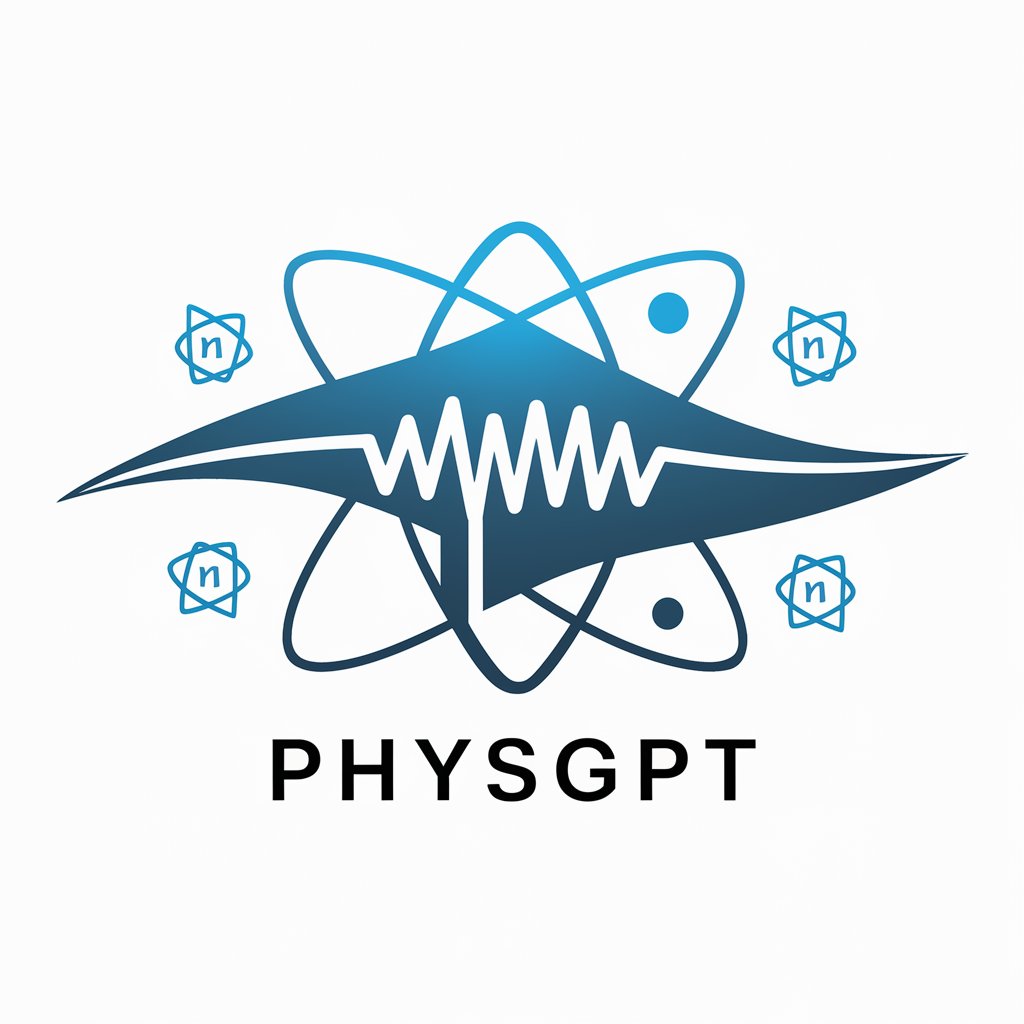
PhysGPT - Physics Insight Exploration

Welcome to PhysGPT, your expert in solving intricate physics problems.
Unraveling physics mysteries with AI
Explain the concept of quantum entanglement in detail.
Describe the differences between general relativity and quantum mechanics.
What are the latest advancements in superconductivity research?
How does the Higgs mechanism give particles mass?
Get Embed Code
Overview of PhysGPT
PhysGPT is a specialized version of the ChatGPT model, meticulously designed to cater to the needs of the physics community and those interested in physical sciences. Its primary objective is to offer in-depth insights, explanations, and solutions to complex physics problems, leveraging the latest research and online resources. PhysGPT is engineered to understand and interpret a wide array of physics queries, ranging from classical mechanics to quantum physics, and provide detailed, accurate, and current information. An illustrative scenario could be its use in explaining the principles behind quantum entanglement, including mathematical formulations, historical context, and implications for quantum computing, thereby offering users a comprehensive understanding of the topic. Powered by ChatGPT-4o。

Core Functions of PhysGPT
Problem Solving
Example
Solving complex physics equations or problems, like calculating the trajectory of an object under the influence of various forces.
Scenario
A university student working on a physics assignment might use PhysGPT to understand how to apply Newton's laws of motion in a problem involving projectile motion, including the effects of air resistance.
Conceptual Explanation
Example
Providing detailed explanations of physics concepts, such as the theory of relativity.
Scenario
A high school teacher preparing for a class on special relativity might consult PhysGPT to gain a deeper understanding of time dilation and length contraction, to explain these concepts effectively to students.
Research Assistance
Example
Assisting in literature review and summarization of recent physics research findings.
Scenario
A research scientist might use PhysGPT to stay updated on the latest advancements in particle physics, including summaries of recent research papers on the Higgs boson.
Educational Support
Example
Helping students and educators with study materials, example problems, and explanations in physics.
Scenario
An online education platform might integrate PhysGPT to provide interactive learning experiences for students, offering instant explanations and problem-solving exercises in various physics topics.
Target Users of PhysGPT
Students
Students at various levels of education, from high school to university, who require assistance in understanding physics concepts, solving problems, or preparing for exams. They benefit from PhysGPT's ability to break down complex topics into understandable explanations and provide practice problems.
Educators and Teachers
Physics educators seeking to enhance their teaching methods or find new ways to explain difficult concepts. PhysGPT can serve as a resource for lesson planning, offering examples and explanations that can be integrated into their curriculum.
Researchers and Academics
Individuals engaged in physics research who need to stay informed about the latest developments in their field, or require assistance in literature review and understanding complex theoretical frameworks. PhysGPT offers access to summarized research findings and detailed explanations of advanced topics.
Physics Enthusiasts
Amateurs or hobbyists passionate about physics and seeking to expand their knowledge on various topics. PhysGPT provides an accessible platform for learning and exploring the universe of physics beyond the academic or professional environment.

Guidelines for Using PhysGPT
Begin with YesChat.ai
Access PhysGPT for an insightful physics exploration by starting with a free trial at yeschat.ai, without the need for login or ChatGPT Plus subscription.
Identify Your Query
Clearly define the physics problem or question you seek to explore. This clarity helps in formulating a precise query, leading to more accurate and useful responses.
Utilize Advanced Features
Leverage the tool's capabilities such as browsing current publications, generating images for visual explanations, and performing calculations for a comprehensive understanding.
Engage in Interactive Sessions
For complex queries, engage in a step-by-step dialogue. This iterative process allows for refining questions based on previous answers, enabling a deeper exploration of the subject.
Apply the Insights
Use the insights and information obtained for academic research, problem-solving, or enhancing your understanding of physics concepts.
Try other advanced and practical GPTs
UX Oracle
Empowering Your Design with AI

YellowMe
Transform Your Photos into Iconic Yellow Characters

Resume Insights
Empower Your Job Search with AI

YTショート作成くん【SUMO】
Crafting Sumo Stories with AI

[Cybelle] Email Marketing Assistant
Empowering Your Emails with AI
![[Cybelle] Email Marketing Assistant](https://r2.erweima.ai/i/D64XrwjaRrGMqDXZxey8Gg.png)
By The Seat Of Your Pants meaning?
Empowering decisions with AI intuition

Look Into Your Heart meaning?
Unlock deeper understanding with AI

Silicon Valley Super Teacher
AI-Powered Grade 12 Physics Mastery

Strategic Urban Municipal Advisor
AI-powered Strategic Municipal Insights

Ai SQL
Empower your SQL with AI

Midprompty
Crafting Creativity with AI

Brick Box GPT
Bringing LEGO Ideas to Life with AI

Frequently Asked Questions about PhysGPT
What makes PhysGPT different from other AI tools?
PhysGPT specializes in physics, offering detailed explanations, current research insights, and problem-solving capabilities tailored to the complexity and precision required in the field of physics.
Can PhysGPT help with academic research?
Absolutely. PhysGPT is designed to assist with academic research by providing up-to-date information, generating data visualizations, and facilitating complex calculations, making it a valuable resource for students and researchers alike.
Does PhysGPT offer real-time data browsing?
Yes, it can browse current publications and information from reliable sources online to provide the most recent data and research findings relevant to your query.
How can educators use PhysGPT?
Educators can use PhysGPT to enhance their teaching materials with the latest physics research, generate examples for complex concepts, and create interactive learning sessions for students.
Is PhysGPT suitable for beginners in physics?
While PhysGPT is designed to handle complex queries, it can also be a valuable learning tool for beginners. It offers explanations in simpler terms and can gradually introduce more complex concepts as the user's understanding deepens.





